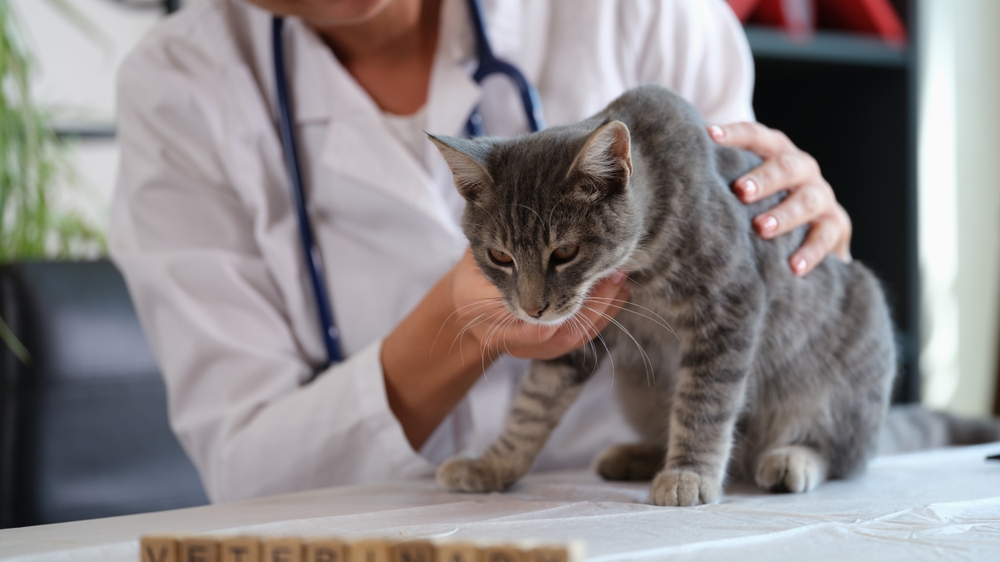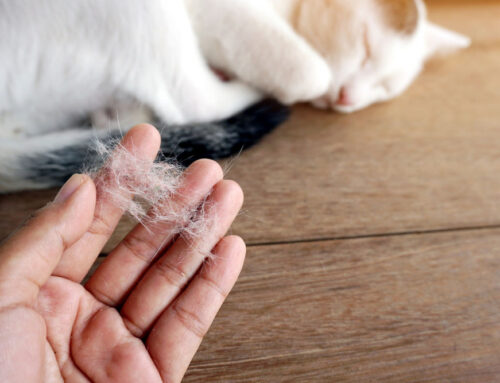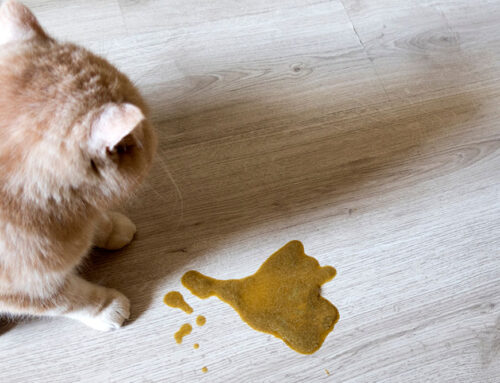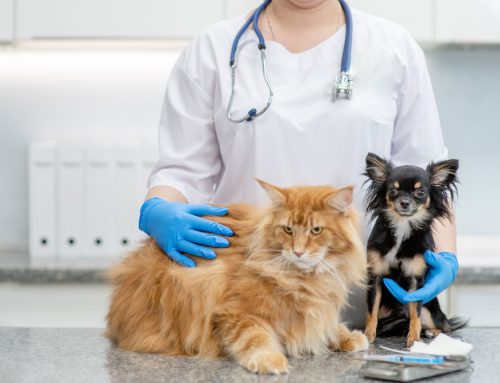Because your cat stays indoors, you may think your feline friend is protected from infectious diseases, but indoor cats can still contract many illnesses. Feline viral diseases are a common issue among cats, particularly the viruses responsible for respiratory illnesses, as many cats contract these pathogens while in animal shelters or as strays.
By learning about the viral diseases your cat can contract, you can better protect your feline friend from potentially lifelong illness. Learn about common feline viral diseases by reading our Sixes Animal Hospital at BridgeMill team’s guide.
Feline viral rhinotracheitis and calicivirus
Feline viral rhinotracheitis [(FVR) i.e., feline herpesvirus type 1] and feline calicivirus (FCV) account for roughly 90% of all feline upper respiratory infections. These two viruses can spread like wildfire through cats living in close quarters such as in animal shelters and catteries. In addition, these viruses can be transmitted via contaminated clothing, bedding, food and water bowls, and surfaces. An infected cat develops signs similar to those in a person who has a cold. In addition to these signs, an infected cat can experience conjunctivitis and ocular discharge, while a cat infected with FCV can develop oral ulcers. Cats infected with FVR or FCV usually exhibit these signs:
- Sneezing
- Nasal discharge
- Fever
- Inappetence
- Lethargy
Once infected, your cat may become a lifelong virus carrier, experiencing symptomatic flares when stressed or ill. Additionally, although they appear healthy, your cat can infect other cats during these flares, making regular vaccination essential for preventing disease transmission.
Feline panleukopenia virus
Feline panleukopenia virus [(FPV) i.e., feline parvovirus or feline distemper] causes signs similar to canine parvovirus. Infected cats shed the virus in their urine, feces, and nasal secretions. While an infected cat sheds the virus for only a couple of days, the virus can survive for up to a year in the environment, making stringent disinfection measures critical for preventing disease transmission.
Most severe in young kittens or unvaccinated cats, FPV attacks rapidly dividing cells in the bone marrow and gastrointestinal (GI) tract. FPV leads to the following signs:
- Diarrhea
- Vomiting
- Fever
- Lethargy
- Severe dehydration
This disease is often fatal in kittens. However, vaccination is highly effective at protecting cats who have undergone a full FPV vaccination series.
Feline leukemia virus
Feline leukemia virus (FeLV) is one of the most common infectious diseases in cats, affecting between 2% and 3% of all cats in the United States. FeLV is a leading cause of cancer in cats. The virus is shed through bodily fluids, including saliva, nasal discharge, urine, feces, and infected nursing cats’ milk. Most commonly, FeLV is transmitted through a bite wound, but the virus can also be spread through mutual grooming and passed from an infected mother to her kittens. Rarely does the virus spread through the use of shared litter boxes and food and water bowls.
Cats infected with FeLV can remain healthy for months or years before declining. They can also experience repeating illness and relative health cycles until their eventual decline, typically within three years of diagnosis. Illness signs vary widely, depending on whether secondary conditions develop, but the most common signs include:
- Anorexia
- Weight loss
- Poor coat condition
- Persistent fever
- Enlarged lymph nodes
- Pale gums
- Gingivitis and stomatitis
- Skin, urinary, and respiratory infections
- Persistent diarrhea
- Ocular conditions
Feline immunodeficiency virus
Feline immunodeficiency virus (FIC) attacks the immune system, leaving infected cats susceptible to many other infections. Infected cats can appear healthy for years until their weakened immune system allows severe illnesses to take root, but many cats with FIV can live average life spans.
FIV is primarily transmitted through bite wounds, so infection risk is low between cats in stable social structures who do not fight. The virus does not appear to be capable of being spread through the use of shared food and water bowls and litter boxes. FIV infections generally occur in three stages:
- Acute phase — The acute phase occurs within one to three months after infection, resulting in lymph node enlargement, fever, lethargy, and anorexia.
- Latent phase — The latent (i.e., asymptomatic) phase can last for months or years with the infected cat showing no outward illness signs.
- Progressive phase — As the disease progresses, the immune system becomes more compromised, leaving infected cats vulnerable to secondary infections. Chronic or recurring skin, urinary, and respiratory infections are common, as are gingivitis and stomatitis. Cats who reach this stage often become critically ill or develop cancer, and ultimately succumb to these severe secondary conditions.
Feline coronavirus and feline infectious peritonitis

Feline infectious peritonitis (FIP) is a viral disease caused by certain feline coronavirus strains. Most feline coronavirus strains cause mild illness, such as diarrhea or upper respiratory signs, from which an infected cat spontaneously recovers. However, the feline coronavirus mutates into FIP in about 10% of infected cats. Once a cat develops FIP, the disease is usually progressive and almost always fatal without therapy. FIP signs include:
- Appetite loss
- Weight loss
- Lethargy
- Fever
- Seizures
- Ataxia
- Pot-bellied appearance
- Difficulty breathing
Although feline viral diseases can cause an infected cat serious health issues, regular vaccination as part of a wellness plan can eliminate or greatly decrease their risk of contracting these viruses. Keep your feline friend safe and healthy by scheduling their next preventive care visit with our Sixes Animal Hospital at BridgeMill team.






Leave A Comment